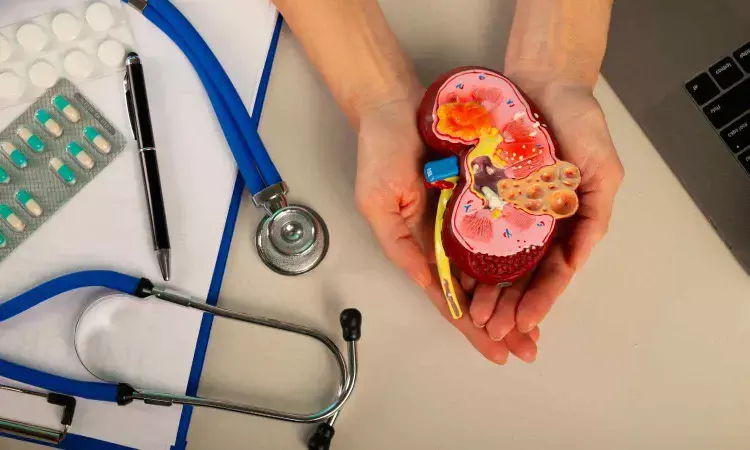- Home
- Medical news & Guidelines
- Anesthesiology
- Cardiology and CTVS
- Critical Care
- Dentistry
- Dermatology
- Diabetes and Endocrinology
- ENT
- Gastroenterology
- Medicine
- Nephrology
- Neurology
- Obstretics-Gynaecology
- Oncology
- Ophthalmology
- Orthopaedics
- Pediatrics-Neonatology
- Psychiatry
- Pulmonology
- Radiology
- Surgery
- Urology
- Laboratory Medicine
- Diet
- Nursing
- Paramedical
- Physiotherapy
- Health news
- Fact Check
- Bone Health Fact Check
- Brain Health Fact Check
- Cancer Related Fact Check
- Child Care Fact Check
- Dental and oral health fact check
- Diabetes and metabolic health fact check
- Diet and Nutrition Fact Check
- Eye and ENT Care Fact Check
- Fitness fact check
- Gut health fact check
- Heart health fact check
- Kidney health fact check
- Medical education fact check
- Men's health fact check
- Respiratory fact check
- Skin and hair care fact check
- Vaccine and Immunization fact check
- Women's health fact check
- AYUSH
- State News
- Andaman and Nicobar Islands
- Andhra Pradesh
- Arunachal Pradesh
- Assam
- Bihar
- Chandigarh
- Chattisgarh
- Dadra and Nagar Haveli
- Daman and Diu
- Delhi
- Goa
- Gujarat
- Haryana
- Himachal Pradesh
- Jammu & Kashmir
- Jharkhand
- Karnataka
- Kerala
- Ladakh
- Lakshadweep
- Madhya Pradesh
- Maharashtra
- Manipur
- Meghalaya
- Mizoram
- Nagaland
- Odisha
- Puducherry
- Punjab
- Rajasthan
- Sikkim
- Tamil Nadu
- Telangana
- Tripura
- Uttar Pradesh
- Uttrakhand
- West Bengal
- Medical Education
- Industry
Patients undergoing dialysis before transplantation have increased diabetic retinopathy risk: Study

A new study published in the Nature Scientific Reports showed that compared to kidney recipients who got preemptive transplants, individuals who experienced dialysis prior to transplantation are at a higher risk of developing long-term visual problems, including dry eye and diabetic retinopathy.
For individuals with end-stage renal disease, kidney transplantation is the only proven therapy option, and its success rate has grown over time. The patient survival has increased and the rejection rate has decreased thanks to improvements in surgical methods, immunosuppressive medications, and excellent postoperative care. Uremia, anemia, and oxidative stress are metabolic variables that might lead to ocular consequences from renal disease.
Furthermore, the link between alterations in the retinal microvasculature and microalbuminuria, a symptom of kidney glomerulus damage, raises the possibility that endothelial dysfunction is happening concurrently in the kidney and retinal blood vessels. Thus, this study evaluated the long-term ocular issues and determine the variables influencing these difficulties in dialysis and preemptive kidney transplant patients.
Nearly, 548 individuals who had a full ophthalmologic examination at least a year following kidney donation were included. Two groups of patients were created: Group 1 consisted of individuals who had previously had dialysis, and Group 2 consisted of those who had not. Hypertension and diabetes mellitus were identified as possible causes of retinopathy. Refractive error, intraocular pressure (IOP), best corrected visual acuity (BCVA), and results from dilated fundus and slit-lamp exams were among the data gathered.
Pterygium, corneal calcification, arcus lipoides, macular drusen, hypertensive retinopathy, central serous chorioretinopathy (CSC), diabetic retinopathy, pinguecula, lens opacity, and refractive error were among the ocular abnormalities that were noted. Every patient was receiving mycophenolate mofetil, calcineurin inhibitors, steroids, and mTOR inhibitors as part of maintenance immunosuppressive treatment.
A total of 291 patients in Group 2 (without dialysis) and 257 in Group 1 (with previous dialysis) were enrolled in the study. The groups' requirements for myopic and hyperopic correction were comparable. Group 1 had a noticeably higher prevalence of dry eye. There were no discernible variations in the rates of glaucoma, cataract, pterygium, arcus lipoides, or pinguecula.
While other posterior segment findings, such as macular drusen, hypertensive retinopathy, and CSC, were similar between groups, diabetic retinopathy was considerably more prevalent in Group 1. The most common ocular problems were retinopathy, cataracts, and dry eye The patients who had previously had dialysis were much more likely to develop diabetic retinopathy and dry eye.
Overall, patients who had dialysis before transplantation were more likely to acquire and advance diabetic retinopathy than those who received preemptive transplantation.
Source:
Çetinkaya Yaprak, A., Avanaz, A., Erkan Pota, Ç., Arabacı Tur, K. T., & Yaprak, M. (2025). Long-term ocular complications after kidney transplantation. Scientific Reports, 15(1), 15222. https://doi.org/10.1038/s41598-025-99847-3
Neuroscience Masters graduate
Jacinthlyn Sylvia, a Neuroscience Master's graduate from Chennai has worked extensively in deciphering the neurobiology of cognition and motor control in aging. She also has spread-out exposure to Neurosurgery from her Bachelor’s. She is currently involved in active Neuro-Oncology research. She is an upcoming neuroscientist with a fiery passion for writing. Her news cover at Medical Dialogues feature recent discoveries and updates from the healthcare and biomedical research fields. She can be reached at editorial@medicaldialogues.in
Dr Kamal Kant Kohli-MBBS, DTCD- a chest specialist with more than 30 years of practice and a flair for writing clinical articles, Dr Kamal Kant Kohli joined Medical Dialogues as a Chief Editor of Medical News. Besides writing articles, as an editor, he proofreads and verifies all the medical content published on Medical Dialogues including those coming from journals, studies,medical conferences,guidelines etc. Email: drkohli@medicaldialogues.in. Contact no. 011-43720751


